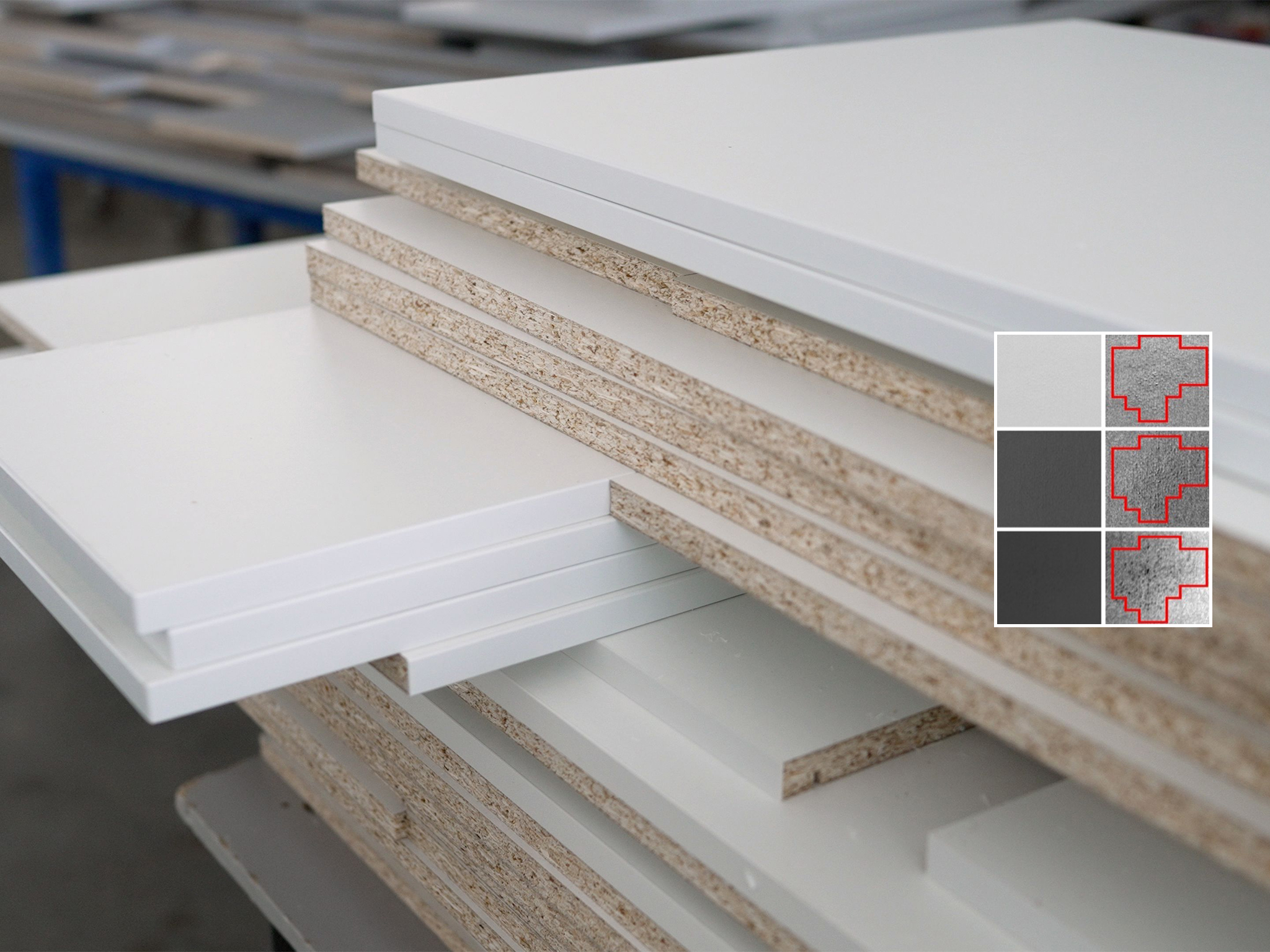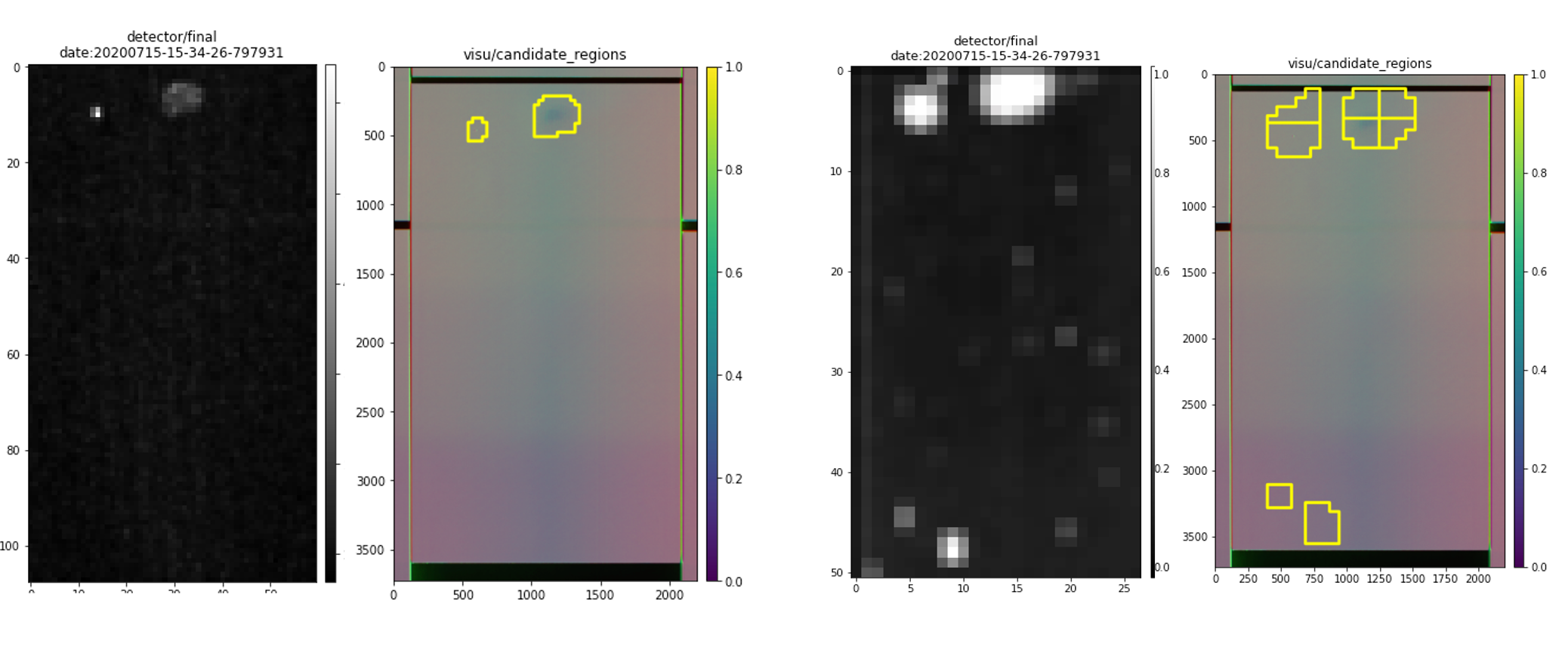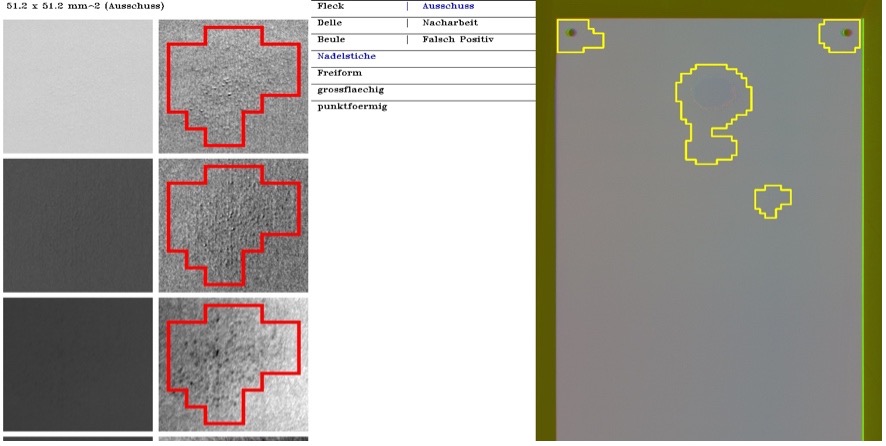Our researchers are developing new methods to automate the detection of defects on surfaces in production. We use hybrid methods that combine classic image processing with Artificial Intelligence (AI). This allows us to create a reliable and adaptable inspection system that works under real production conditions and significantly improves quality assurance. The systems inspect surfaces very accurately and find even small defects that are difficult to detect with the human eye.
We are working on making Machine Learning – especially Deep Learning – accessible for surface inspection. We develop and implement complex inline inspection systems based on Deep Neural Networks (DNN). One specific application example is the inspection system for wooden shelves, which uses various image acquisition techniques to achieve a high defect detection rate and replace manual inspection.



